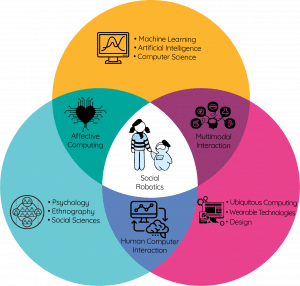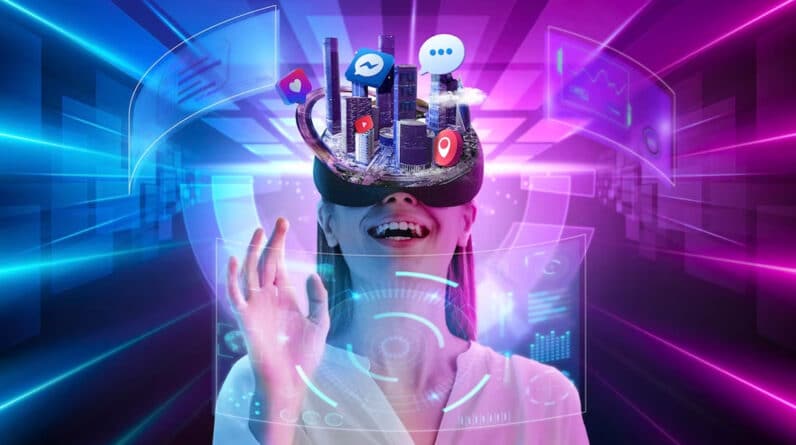In the fascinating world of artificial intelligence, one cutting-edge approach stands out as a game-changer: reinforcement learning. This innovative technique allows AI to learn and improve its performance by making mistakes and receiving feedback. By imitating the human learning process, reinforcement learning enables AI to evolve and adapt, fostering a new era of intelligent machines. In this article, we will explore the concept of reinforcement learning, its applications, and how it has the potential to revolutionize various industries. So, buckle up and get ready to embark on an enlightening journey into the realm of AI and its ever-evolving capabilities.

What is Reinforcement Learning?
Definition of Reinforcement Learning
Reinforcement Learning (RL) is a type of machine learning where an agent learns to make decisions through trial and error in order to maximize a cumulative reward. Unlike other forms of machine learning, reinforcement learning does not rely on labeled input-output pairs to learn from. Instead, the agent interacts with its environment, taking actions and receiving feedback in the form of rewards or penalties. The ultimate goal of reinforcement learning is for the agent to discover the optimal sequence of actions that maximizes its long-term cumulative reward.
Key Concepts in Reinforcement Learning
There are several key concepts that form the foundation of reinforcement learning:
-
Agent: The entity or system that learns through interaction with the environment and takes actions based on its observations.
-
Environment: The external system or entity with which the agent interacts. The environment can be anything from a virtual simulation to a physical world.
-
Action: The choices or decisions made by the agent to influence the environment. Actions can have short-term and long-term consequences.
-
Reward: The feedback or evaluation signal that the agent receives from the environment based on its actions. Rewards can be positive or negative and are used to reinforce or discourage certain behaviors.
-
Policy: The strategy or set of rules that the agent follows to determine its actions. The policy may change over time as the agent learns and improves its decision-making process.
By understanding these key concepts, we can delve deeper into the importance of teaching AI to learn from its mistakes using reinforcement learning.
The Importance of Teaching AI to Learn from Its Mistakes
Challenges in Traditional Machine Learning
Traditional machine learning approaches often rely on labeled datasets to train models. However, in many cases, it is difficult or expensive to obtain a large amount of labeled data. Additionally, traditional machine learning typically focuses on finding the best solution based on the available data without considering the exploration of new options or learning from mistakes. This can result in suboptimal solutions and limited adaptability in dynamic environments.
Benefits of Reinforcement Learning
Reinforcement learning addresses these challenges by allowing AI systems to learn and improve through interactions with their environments. By actively exploring different actions, reinforcement learning enables AI to discover novel strategies and adapt to changing circumstances. This ability to learn from mistakes and iterate on decision-making processes is crucial for AI systems to continually improve performance and achieve optimal outcomes.
Reinforcement learning has several key benefits, including:
-
Adaptive Decision-Making: By learning from trial and error, AI systems can adapt their decision-making strategies to various scenarios and changes in the environment.
-
Generalization: Reinforcement learning allows AI systems to generalize from previous experiences to new, unseen situations. This enables them to make informed decisions even in unfamiliar contexts.
-
Optimal Solutions: Through the iterative process of learning from mistakes, reinforcement learning can lead to the discovery of optimal solutions that maximize long-term rewards.
-
Real-Time Learning: Reinforcement learning enables AI systems to learn and update their policies on the go, allowing for continuous improvement and real-time decision-making.
By incorporating reinforcement learning into AI systems, we can unlock their full potential and create more intelligent and adaptable agents.

Components of Reinforcement Learning
Agent
The agent in reinforcement learning refers to the entity or system that interacts with the environment. It is responsible for making decisions based on its observations and learning from the feedback received. The agent’s goal is to maximize its long-term cumulative reward by selecting actions that lead to positive outcomes.
Environment
The environment in reinforcement learning represents the external system or entity with which the agent interacts. It can be a virtual simulation or a physical world. The environment provides the agent with feedback in the form of rewards or penalties based on its actions. The agent’s actions can also influence the state of the environment.
Action
Actions are the choices or decisions made by the agent to affect the environment. The agent selects actions based on its observations and the current state of the environment. The chosen actions can have immediate consequences as well as long-term impacts on future states and rewards.
Reward
Rewards are the feedback or evaluation signals that the agent receives from the environment based on its actions. Rewards can be positive or negative and are used to reinforce or discourage certain behaviors. The agent’s objective is to learn a policy that maximizes the cumulative reward over time.
Policy
The policy in reinforcement learning refers to the strategy or set of rules that the agent follows to determine its actions. The policy can be deterministic, mapping observations directly to actions, or stochastic, assigning probabilities to different actions based on the observed state. The policy may change over time as the agent learns and improves its decision-making process.
By understanding and optimizing these components, we can effectively train AI agents using reinforcement learning techniques.
Exploration vs Exploitation
Balancing Exploration and Exploitation
One of the key challenges in reinforcement learning is striking a balance between exploration and exploitation. Exploration refers to the act of trying out new actions to gather information about the environment and potentially discover better strategies. Exploitation, on the other hand, involves leveraging the known actions and strategies that have proven to be effective.
Finding the right balance between exploration and exploitation is critical to the success of reinforcement learning. Too much exploration may lead to inefficiency and unnecessary risk-taking, while excessive exploitation may result in suboptimal solutions and limited adaptability. Reinforcement learning algorithms aim to find an optimal trade-off between exploration and exploitation to maximize the agent’s cumulative reward.
Exploration Methods
Various exploration methods can be employed in reinforcement learning to encourage the agent to explore new actions and gather information about the environment. Some commonly used exploration methods include:
-
Epsilon-Greedy: This method selects the action with the highest expected reward with a probability of (1-epsilon) and chooses a random action with a probability of epsilon. It allows for exploitation of known actions while still allowing some exploration.
-
Thompson Sampling: A Bayesian approach where the agent maintains a distribution of the expected rewards for each action. The agent then samples from this distribution to select the action to take, ensuring both exploration and exploitation.
-
Upper Confidence Bound (UCB): This method balances exploration and exploitation by considering the uncertainty in the estimated action values. Actions with high uncertainty are given higher priority for exploration.
These methods help the agent explore the environment, gather valuable information, and refine its decision-making process.
Exploitation Methods
Exploitation methods in reinforcement learning focus on leveraging the known actions and strategies that have demonstrated to be effective. These methods aim to maximize the agent’s expected reward by exploiting the knowledge gained through exploration and learning.
Some common exploitation methods include:
-
Greedy Policy: Exploits the action with the highest expected reward at each step. This approach does not consider exploration and may get stuck in suboptimal solutions.
-
Softmax Policy: Uses a probabilistic approach to select actions based on their expected rewards. It assigns probabilities to each action and samples from these probabilities to determine the action to take. This method allows for some level of exploration while also favoring actions with higher expected rewards.
-
Upper Confidence Bound (UCB): UCB algorithms balance exploration and exploitation by considering the uncertainty in the estimates of action values. Actions with high expected rewards and low uncertainty are prioritized for exploitation.
By utilizing exploration and exploitation methods effectively, reinforcement learning agents can navigate complex environments and learn from their experiences.

Understanding the Learning Process
Trial and Error
Trial and error is a fundamental aspect of the learning process in reinforcement learning. The agent interacts with the environment, taking actions and receiving feedback in the form of rewards or penalties. Through repeated trials, the agent learns which actions lead to positive outcomes and which ones result in negative consequences. By adjusting its policy based on the received feedback, the agent gradually improves its decision-making process and maximizes its long-term reward.
Markov Decision Process
Reinforcement learning is often formulated as a Markov Decision Process (MDP), which provides a mathematical framework for modeling sequential decision-making problems. An MDP consists of a set of states, actions, transition probabilities, rewards, and a discount factor. The agent’s goal is to find the optimal policy that maximizes the expected cumulative reward over time.
In an MDP, the agent observes the current state of the environment, selects an action based on its policy, and transitions to a new state based on the action taken and the environment’s dynamics. The agent receives a reward based on its action and the resulting state. These transitions and rewards are probabilistic, and the agent’s policy aims to maximize the expected cumulative reward.
Value Functions
Value functions play a crucial role in reinforcement learning algorithms. They estimate the expected cumulative reward the agent can achieve from a given state or state-action pair. There are two main types of value functions:
-
State Value Function (V): Estimates the expected cumulative reward from a given state by following the agent’s policy.
-
Action Value Function (Q): Estimates the expected cumulative reward from taking a specific action in a given state and then following the agent’s policy.
By updating and refining the value functions through the learning process, the agent can make informed decisions to maximize its long-term reward.
Q-Learning
Q-learning is one of the most well-known algorithms in reinforcement learning. It is a model-free, off-policy algorithm that allows the agent to learn an optimal action-value function (Q-function) without knowledge of the environment’s dynamics. Q-learning uses the Bellman equation to iteratively update the Q-values based on the observed rewards and the estimated future Q-values.
By iteratively updating the Q-values and adjusting the policy accordingly, Q-learning enables the agent to learn the optimal strategy that maximizes its long-term reward. This algorithm has been successfully applied in various domains, including gaming, robotics, and finance.
Applications of Reinforcement Learning
Gaming and Game AI
Reinforcement learning has had significant success in gaming and the development of game AI. By training agents to play games through reinforcement learning, we can create intelligent opponents that can adapt to different strategies and continuously improve their performance. Reinforcement learning has been used to train agents for complex games like Go, Chess, and Poker, where the agent’s ability to learn and adapt is crucial for competing with human players.
Robotics and Automation
Reinforcement learning has huge potential in robotics and automation. By teaching robots to learn and improve through interaction with their environment, we can create more versatile and adaptable robotic systems. Reinforcement learning enables robots to learn complex tasks, such as object manipulation, locomotion, and navigation, by trial and error. This approach allows robots to adapt to different environments and handle unforeseen situations, making them more autonomous and efficient.
Natural Language Processing
Reinforcement learning has also found applications in natural language processing (NLP). By training NLP models using reinforcement learning, we can improve their language generation capabilities, dialogue management, and language understanding. Reinforcement learning enables NLP models to learn from interactions with users and iteratively improve their responses and performance. This approach has been used in developing conversational agents, chatbots, and virtual assistants.
Finance and Trading
Reinforcement learning has gained attention in the field of finance and trading. By training AI agents to make optimal decisions based on market data and historical trends, we can develop automated trading strategies that adapt to changing market conditions. Reinforcement learning algorithms enable agents to learn from market feedback, optimize their trading strategies, and make informed decisions to maximize returns while managing risks.
These are just a few examples of how reinforcement learning is revolutionizing various domains and enabling AI systems to perform complex tasks more effectively.

Challenges and Limitations of Reinforcement Learning
Sample Efficiency
One of the major challenges in reinforcement learning is sample efficiency. Traditional reinforcement learning algorithms often require a large number of interactions with the environment to learn an optimal policy. This can be computationally expensive and impractical in real-world scenarios where each interaction may be time-consuming or costly. Improving sample efficiency in reinforcement learning is an ongoing research area to enable more practical and effective learning algorithms.
Curse of Dimensionality
Another challenge in reinforcement learning is the curse of dimensionality. As the dimensionality of the state and action spaces increases, the number of possible combinations also grows exponentially. This poses a significant challenge for learning algorithms, as it becomes increasingly difficult to explore and optimize the policy. Techniques such as function approximation, dimensionality reduction, and specialized algorithms are employed to mitigate the curse of dimensionality.
Reward Engineering
Designing appropriate reward functions is crucial in reinforcement learning. The reward function determines the goal and desired behavior of the agent. However, defining reward functions that effectively capture the desired behavior without unintended side effects can be challenging. Reward engineering requires careful consideration to avoid incentivizing undesired behaviors or creating unintended biases. It is an active area of research to develop techniques for reward shaping and designing reward functions that align with the desired objectives.
Addressing these challenges and finding solutions to the limitations of reinforcement learning is essential for unlocking its full potential in various applications.
Ethical Considerations in Reinforcement Learning
Bias and Fairness
Reinforcement learning algorithms are susceptible to biases that can have ethical implications. Biases in the training data or reward functions can result in unfair outcomes and reinforce existing inequalities. To ensure fairness, it is important to carefully design and evaluate reinforcement learning systems, consider the potential biases in the data, and incorporate fairness measures in the learning process. Ethical considerations should be taken into account when applying reinforcement learning algorithms to avoid unintended discriminatory effects.
Transparency and Accountability
Reinforcement learning models can be complex and difficult to interpret. Lack of transparency in the decision-making process can raise concerns about accountability and trustworthiness. Ethical reinforcement learning requires developing methods to explain and interpret the decisions made by AI systems. Ensuring transparency allows stakeholders to understand the reasoning behind the decisions and hold the AI systems accountable for their actions.
Safeguarding Against Harm
Reinforcement learning systems have the potential to learn and adapt rapidly, sometimes leading to unintended consequences. It is important to ensure that AI systems are designed with appropriate safeguards to prevent harm. This includes rigorous testing and validation procedures, safety precautions, and fail-safe mechanisms. Ethical reinforcement learning requires taking proactive measures to mitigate potential risks and ensure the responsible use of AI systems.
Considering the ethical implications and incorporating safeguards in reinforcement learning is crucial to promote trust, fairness, and accountability in the deployment of AI systems.

Limitations of Reinforcement Learning
Lack of Generalization
Reinforcement learning, in its basic form, does not inherently generalize well to new, unseen situations. The agent’s policy is typically learned and optimized within the specific context of the training environment. When faced with a different or unfamiliar environment, the agent may struggle to adapt its policy and make appropriate decisions. Generalization in reinforcement learning is an active research area, with techniques such as transfer learning and domain adaptation being explored to enable agents to generalize across different contexts.
Modeling Uncertainty
Reinforcement learning typically assumes a known model of the environment, including the transition probabilities and rewards. However, in many real-world scenarios, the model may be uncertain or unknown. Modeling uncertainty is critical to make robust decisions and handle stochastic environments. Techniques such as Bayesian reinforcement learning and model-based algorithms aim to address the challenge of modeling uncertainty and improve the agent’s decision-making capabilities in such scenarios.
Overcoming these limitations is essential for advancing reinforcement learning algorithms and making them more applicable in real-world and dynamic environments.
Current Trends and Future Directions
Deep Reinforcement Learning
Deep Reinforcement Learning (DRL) combines reinforcement learning with deep neural networks, enabling agents to learn directly from raw sensory inputs, such as images or audio. DRL has shown significant advancements in solving complex tasks and achieving human-level performance in various domains. Deep Q-Networks (DQN) and Proximal Policy Optimization (PPO) are popular algorithms in the field of DRL. The integration of deep learning and reinforcement learning holds great potential for solving increasingly complex and high-dimensional problems.
Transfer Learning
Transfer learning aims to transfer the knowledge and learned policies from one task or domain to another. By leveraging the knowledge accumulated from previous tasks, transfer learning can accelerate the learning process and enable the agent to achieve good performance in new and unseen environments with minimal training. Transfer learning in reinforcement learning has gained attention as a means to facilitate generalization and improve sample efficiency in learning algorithms.
Multi-Agent Reinforcement Learning
Multi-Agent Reinforcement Learning (MARL) focuses on scenarios where multiple agents interact with each other and the environment. MARL poses additional challenges, such as coordination, competition, and the possibility of adversarial behavior. By training agents to learn and cooperate with each other, MARL has the potential to solve complex problems that require collaborative decision-making and coordination among multiple entities. MARL has applications in areas such as multi-robot systems, traffic management, and economic markets.
Model-Based Reinforcement Learning
Model-Based Reinforcement Learning (MBRL) combines model learning with reinforcement learning. It aims to learn a model of the environment’s dynamics from observed interactions and then use this model to plan and optimize actions. MBRL can improve sample efficiency, planning capabilities, and the ability to handle complex environments. By explicitly considering the learned model, MBRL provides a more structured and efficient approach to reinforcement learning.
These current trends and future directions in reinforcement learning hold great promise for advancing the capabilities of AI systems and solving increasingly complex and real-world problems.
In conclusion, reinforcement learning offers a powerful framework for teaching AI systems to learn from their mistakes and continuously improve their decision-making processes. By leveraging the concepts of exploration, exploitation, trial and error, and value-based learning, reinforcement learning agents can adapt to changing environments, discover optimal strategies, and achieve long-term cumulative rewards. From gaming and robotics to natural language processing and finance, reinforcement learning has found applications in various domains. However, challenges such as sample efficiency, the curse of dimensionality, and reward engineering need to be addressed. Ethical considerations, limitations, and the need for safeguarding against harm also require careful attention. With current trends such as deep reinforcement learning, transfer learning, multi-agent reinforcement learning, and model-based reinforcement learning, the future of reinforcement learning looks promising, as it pushes the boundaries of AI capabilities and opens up new possibilities for intelligent systems.






